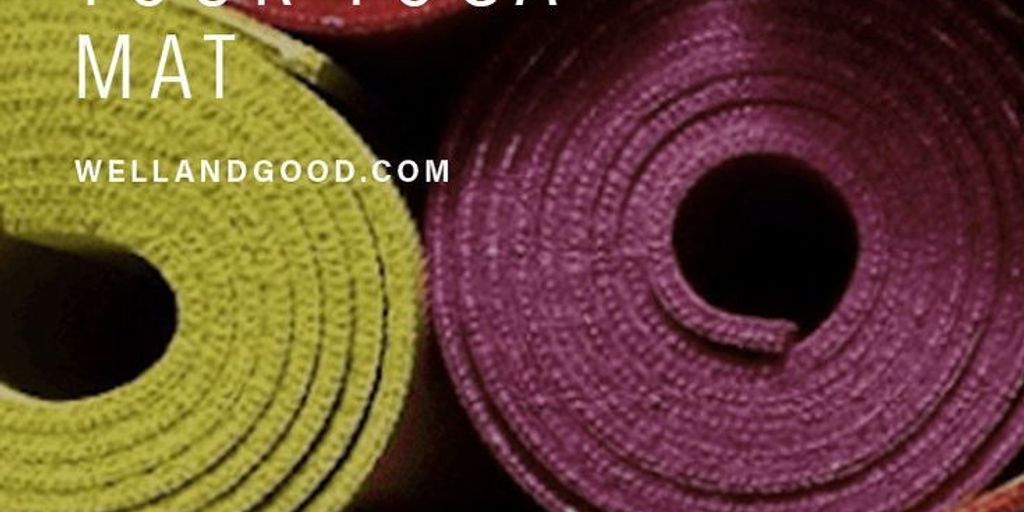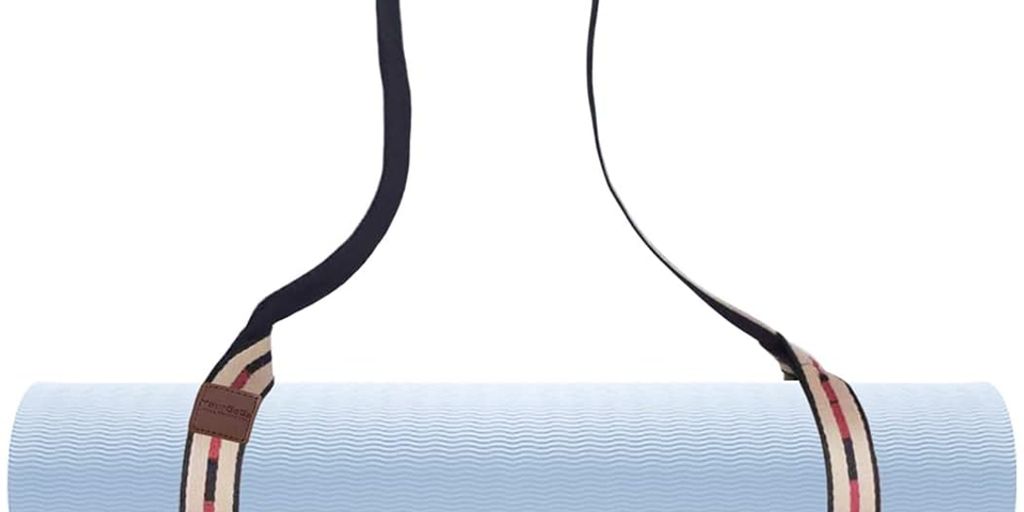
The Ultimate Guide on How to Clean Your Yoga Mat for a Fresh Practice
Keeping your yoga mat clean is super important for your health and to make your yoga sessions feel great. A clean mat can help you avoid germs and make your mat last longer. This guide will show you the best ways to clean your yoga mat, what tools you'll need, and how often you should clean it.
Key Takeaways
- Regular cleaning of your yoga mat helps prevent bacteria and germs from building up.
- Using the right cleaning tools and solutions can make the job easier and more effective.
- Natural cleaning solutions like vinegar and essential oils can work well and smell great.
- Properly drying and storing your mat will keep it in good shape for longer.
- Knowing how often to clean your mat depends on how much you use it and other factors.
Why It's Important to Clean Your Yoga Mat
Keeping your yoga mat clean is crucial for several reasons. Let's explore why it's essential to maintain a clean mat for your practice.
Preventing Bacterial Growth
A dirty yoga mat can become a breeding ground for bacteria and germs. Routine maintenance can be as easy as a simple wipe-down with a DIY solution. This helps in preventing infections and keeps you healthy.
Prolonging the Life of Your Mat
Regular cleaning can significantly extend the lifespan of your yoga mat. Dirt and sweat can break down the material over time. By keeping it clean, you ensure that your mat stays in good condition for longer.
Enhancing Your Practice Experience
A clean mat can make your yoga practice more enjoyable. It provides a fresh and pleasant surface to practice on, free from unpleasant odors and grime. This can help you focus better and get the most out of your sessions.
Taking care of your yoga mat is not just about hygiene; it's also about enhancing your overall yoga experience.
Materials and Tools You'll Need
Choosing the Right Cleaning Solution
Selecting the right cleaning solution is crucial for maintaining your yoga mat. Avoid harsh chemicals that can damage the material. Opt for gentle, natural cleaners like a mix of water and vinegar or specialized yoga mat cleaners.
Essential Cleaning Tools
To clean your yoga mat effectively, you'll need a few basic tools:
- A soft cloth or sponge
- A spray bottle
- A clean towel
- A bucket (optional)
These tools help ensure you can clean your mat without causing any damage.
Optional Accessories for Deep Cleaning
For a more thorough clean, consider these optional accessories:
- A soft-bristled brush for scrubbing
- Essential oils for a pleasant scent
- A drying rack or hanger
Deep cleaning your mat occasionally can help prolong its life and keep it smelling fresh.
Step-by-Step Guide to Cleaning Your Yoga Mat
Preparing Your Mat for Cleaning
Before you start cleaning, make sure to unroll your yoga mat and lay it flat on a clean surface. Remove any loose dirt or debris by shaking it out or using a soft brush. This will make the cleaning process more effective.
Applying the Cleaning Solution
Mix a mild soap with water to create a gentle cleaning solution. Use a soft cloth or sponge to apply the solution to your mat. Wipe down the entire surface, paying extra attention to any stubborn spots. Avoid soaking the mat, as too much water can damage it.
Drying Your Mat Properly
After cleaning, it's important to dry your mat thoroughly. Roll it up in a clean towel to absorb excess water. Then, unroll it and let it air dry completely before using it again. Never put your yoga mat in direct sunlight as this can cause it to fade or become brittle.
A clean mat not only enhances your yoga practice but also improves your hygiene.
Natural Cleaning Solutions for Your Yoga Mat
Keeping your yoga mat clean doesn't have to involve harsh chemicals. There are plenty of natural solutions that are both effective and gentle on your mat.
Using Vinegar and Water
A simple mixture of vinegar and water can work wonders. Combine equal parts of white vinegar and water in a spray bottle. Spray the solution onto your mat and wipe it down with a clean cloth. This solution helps to kill bacteria and remove odors.
Essential Oils for a Fresh Scent
Adding a few drops of essential oils to your cleaning solution can leave your mat smelling fresh. Tea tree oil is a great choice because of its natural antibacterial properties. Lavender and eucalyptus oils are also popular for their pleasant scents.
DIY Cleaning Sprays
You can easily make your own cleaning spray at home. Mix 1 cup of water, 1/4 cup of white vinegar, and 10-15 drops of your favorite essential oil. Pour the mixture into a spray bottle and shake well before each use. This DIY spray is perfect for a quick clean after each practice.
Regular cleaning with natural solutions not only keeps your mat hygienic but also enhances your overall yoga experience.
How Often Should You Clean Your Yoga Mat?
Factors That Affect Cleaning Frequency
The frequency of cleaning your yoga mat depends on several factors. How often you practice and the type of yoga you do can make a big difference. For example, hot yoga will make your mat dirtier faster than gentle yoga. Also, if you sweat a lot, you will need to clean your mat more often.
Signs Your Mat Needs Cleaning
There are some clear signs that your mat needs cleaning. If it starts to smell bad or feels sticky, it's time to clean it. Also, if you see dirt or stains, don't wait to clean it. Keeping your mat clean will help you enjoy your practice more.
Creating a Cleaning Schedule
To keep your mat in good shape, create a cleaning schedule. You can clean it lightly after each use and do a deep clean once a month. Here is a simple schedule you can follow:
- Daily: Wipe down with a damp cloth
- Weekly: Use a mild cleaning solution
- Monthly: Deep clean with a thorough wash
Regular cleaning not only keeps your mat fresh but also extends its life. Make it a habit to clean your mat, and you'll have a better practice experience.
Storing Your Yoga Mat After Cleaning
Proper Storage Techniques
After cleaning your yoga mat, it's crucial to store it correctly to keep it in good shape. Always let your mat dry completely before rolling it up. This helps prevent mildew and keeps your mat fresh. Store your mat in a cool, dry place away from direct sunlight.
Avoiding Common Storage Mistakes
Avoid storing your mat in damp or humid areas, as this can lead to bacterial growth. Don't leave your mat in your car for long periods, especially in hot weather. Also, avoid folding your mat, as this can cause creases and damage over time.
Travel Tips for Keeping Your Mat Clean
When traveling, use a mat bag to protect your mat from dirt and damage. If you don't have a mat bag, a simple strap can also work. Remember to clean your mat after each use, especially when practicing outdoors or in public spaces.
Proper storage of your yoga mat ensures it stays clean and lasts longer, enhancing your practice experience.
Special Considerations for Different Types of Yoga Mats
Cleaning Rubber Mats
Rubber mats are popular for their durability and grip. However, they can be sensitive to certain cleaning solutions. Use a mild soap and water mixture to clean these mats. Avoid using harsh chemicals as they can damage the rubber.
Cleaning PVC Mats
PVC mats are the most common type of yoga mats. They are easy to clean and maintain. A simple solution of water and mild detergent works well. Make sure to rinse thoroughly to remove any soap residue.
Cleaning Eco-Friendly Mats
Eco-friendly mats are made from natural materials like jute or cork. These mats require special care. Use a gentle, natural cleaner like a vinegar and water solution. Avoid soaking these mats as it can weaken the natural fibers.
Always check the manufacturer's instructions before cleaning your yoga mat to ensure you are using the right method.
By understanding the specific needs of your yoga mat, you can keep it in great condition for a long time.
When choosing a yoga mat, it's important to consider the different types available. Each type has its own benefits and is suited for different needs. Whether you prefer natural rubber, eco-friendly materials, or a foldable option for travel, there's a perfect mat for you. To explore our full range of yoga mats and find the one that fits your practice best, visit our website today!
Conclusion
Keeping your yoga mat clean is super important for a fresh and enjoyable practice. By following the steps we've shared, you can easily keep your mat in great shape. Regular cleaning not only helps your mat last longer but also keeps it free from germs and bad smells. Remember, a clean mat means a better yoga experience. So, take a few minutes after each session to wipe it down and give it a deep clean every now and then. Your body and mind will thank you for it!
Frequently Asked Questions
Why should I clean my yoga mat?
Cleaning your yoga mat stops bacteria from growing, makes it last longer, and helps you enjoy your practice more.
What do I need to clean my yoga mat?
You need a good cleaning solution, some basic tools like a cloth or sponge, and maybe some extras for deep cleaning.
How do I clean my yoga mat?
First, get your mat ready. Then, put on the cleaning solution. Finally, let it dry properly.
Can I use natural cleaners on my yoga mat?
Yes, you can use things like vinegar and water, essential oils, or make your own cleaning sprays.
How often should I clean my yoga mat?
It depends on how often you use it, but look for signs it needs cleaning and try to make a schedule.
How should I store my yoga mat after cleaning?
Store it the right way, avoid common mistakes, and follow tips to keep it clean, especially when traveling.


